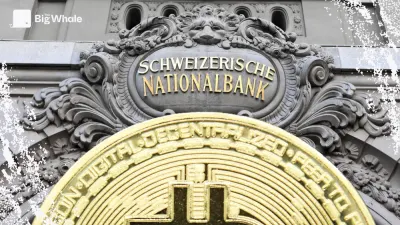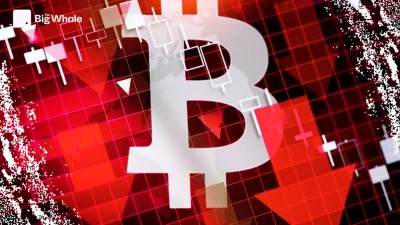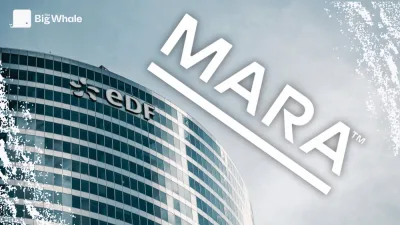TBW - DeFi Fee Switch: Economic Game-Changer or Marketing Hype?

For years, governance tokens offered only voting rights, with no real financial return for their holders. With the rise of Fee Switch, a new era has dawned: one in which users can capture a share of the revenue generated by the protocols themselves.
A technical concept until recently, it is becoming a major strategic issue for DeFi. How does this mechanism work? Why is it attracting more and more projects? And what are its limitations? We take a closer look.
Fee Switch: definition, usefulness, implementation and regulation
What is a Fee Switch, and what is it used for?
A concept that was still emerging two years ago, the Fee Switch is now making its mark in the decentralised finance (DeFi) ecosystem.
The principle is simple: redistribute part of the transaction fees generated by a protocol to the holders of its native token, or through other mechanisms depending on the strategy defined.
Each interaction on a DeFi protocol - whether a bridge, a lending platform, or a token exchange on a DEX (Decentralized Exchange) - generates fees.
With a Fee Switch activated, a fraction of these revenues is collected and then paid back to the holders of the project's governance token. In practical terms, a user holding token X in staking could receive a share of the platform's revenues in return.
This offers participants a new incentive model that is both more virtuous and potentially more attractive than traditional farming or one-off incentive programmes.
What is the process for activating a Fee Switch?
The implementation of a Fee Switch generally involves a governance vote within the project's DAO. A majority of votes in favour is essential, sometimes accompanied by a minimum participation quorum.
The mere tabling of such a proposal can be enough to cause the price of the token concerned to skyrocket, as the examples of Uniswap and Aave have recently shown.
Three main redistribution schemes exist:
- Buyback and burn: using the revenue generated to buy back governance tokens on the market with the aim of destroying them, reducing the available supply.
- Buyback and redistribute: use the revenues generated to buy back governance tokens on the market, then redistribute them to the stakers.
- Direct distribution: redistribute part of the fees directly to the stakers in stablecoins or other assets.
These mechanisms are far from set in stone. A DAO can always adjust them through new votes to refine, suspend or improve the redistribution policy.
What do the regulations say about this?
Long perceived as a major risk, the regulatory framework surrounding Fee Switch, particularly in the US, seems to be evolving.
Distributing a share of revenues to token holders could, until recently, be interpreted by the Securities and Exchange Commission (SEC) as a distribution of profits to passive investors.
This exposed projects to reclassification of their tokens as financial securities (securities), with all the attendant obligations: registration with the regulator, reporting requirements, and restrictions on distribution.
In such a scenario, the entire DeFi model - based on decentralisation and the absence of intermediaries - risked being called into question.
But since the change of US administration, the SEC seems to be softening its stance. The recent dropping of proceedings against Uniswap Labs is a strong signal (see Uniswap's blog post): a more favourable regulatory climate seems to be emerging, at least for truly decentralised protocols.
There remains another stumbling block: taxation. Receiving income in the form of tokens or stablecoins can have varying and complex tax implications depending on the jurisdiction, an issue that users and protocols alike will have to learn to manage. To date, nothing has been decided on this subject.
Lessons from pioneering projects
While the concept is generating enthusiasm, some protocols have already taken action, offering concrete feedback on the impact of a Fee Switch.
Usual: 100% of revenues redistributed
In January 2025, decentralised stablecoin issuer Usual announced the activation of its Revenue Switch, a mechanism unheard of in the ecosystem.
Since 13 January 2025, 100% of the protocol's monthly revenues have been redistributed to USUALx stakers on a weekly basis. This is unprecedented in such a proportion.
To be eligible, tokens must be staked for the entire duration of an epoch. Currently, this mechanism is generating around $700,000 a week, or nearly $2.8 million a month, paid out in USD0, the project's stablecoin.
In the first two months, $7.2 million has been distributed.
The mechanism is all the more interesting because, despite the planned inflation of the USUAL token, the rewards in USUALx offset this dilution. Every day, 10% of new token issues are redistributed to stakers, which mechanically increases the value of their positions.
Since the launch, however, a gradual decline in rewards has been observed: from $1.25 million in the first week to $700,000 recently.
The model is still young and its long-term effectiveness has yet to be validated. But it already offers a stable return in a market where uncertainty remains the norm.
>> Usual: Two months after its community controversy, where does the project stand?
>> Fundamental analysis of Usual
Etherfi : A Fee Switch to build loyalty among stakers
Already innovative with its LP token Buyback programme, leading liquid restaking firm Etherfi took a step further in December 2024 by adopting a Fee Switch.
Every month, 5% of the revenue generated is used to buy ETHFI on the market, tokens that are then redistributed to stakers.
To benefit, participants must keep their tokens in staking for at least one month.
Some figures:
- December 2024: $3.6 million in revenue → $180,000 in ETHFI purchases.
- January 2025: $3.1 million in revenue → $155,000 in purchases.
This corresponded to a monthly APR of between 0.65% and 1.05%, for an annualised APR of between 7% and 13% depending on the quantity of ETHFI staked.
An attractive model but exposed to volatility risks: since redistribution is carried out in native token, stakers remain sensitive to ETHFI price fluctuations.
>> Read the fundamental analysis of EtherFi
Jupiter : The approach via JLP
Since 2023, Solana's main DEX, Jupiter, has been offering an original solution with its JLP Vault, based on a Fee Switch mechanism applied to its leveraged trading products (perps).
The Jupiter Liquidity Provider (JLP) Pool acts as a counterparty to traders, exchanging its liquidity for a share of the fees.
75% of the trading fees generated are thus redistributed to holders of the JLP, which is made up of a basket of diversified assets (SOL, BTC, ETH, USDC, USDT).
The value of the JLP increases mechanically as the fees collected increase. And if the underlying assets (such as SOL, BTC or ETH) appreciate, the value of the JLP also soars - making it a hybrid vehicle combining fee returns and exposure to the crypto market.
In parallel, Jupiter has launched a buyback programme for its JUP governance token, funding buybacks at 50% of protocol fees.
A model that other projects such as DYDX or GMX are also adopting, each with specific variants.
>> Read Solana's fundamental analysis
>> Solana and memecoins: investigating a toxic addiction
Where do the DeFi giants stand?
While several projects have already activated a Fee Switch, others - some of DeFi's most iconic - are getting ready to take the plunge. Here are those to watch closely.
Uniswap: the most eagerly awaited decision
Uniswap remains one of the most scrutinised Fee Switch projects.
To date, the mechanism has not been activated: 100% of swap fees are captured by liquidity providers (LPs), with no direct income for the DAO.
However, a change of model is conceivable.
In 2024, Uniswap generated nearly $950 million in fees according to DefiLlama, giving huge potential for future redistribution.
By enabling Fee Switch, a portion of these fees could be diverted to UNI holders participating in staking.
Several simulations make it possible to estimate different APRs, depending on:
- The percentage of fees redirected to stakers (1% to 5%)
- The share of market capitalisation staked
- The total token valuation (between $1.5 and $7 billion).
Prospective tables show returns ranging from 1% to more than 10% a year for stakers, depending on the assumptions used.
For a MarketCap of $1.5bn:
.png)
For a MarketCap of $3.5bn:
.png)
For a MarketCap of $7 billion:
.png)
Warning, however: these projections remain theoretical.
Governance could opt for a partial model, by activating Fee Switch only on certain high-volume pools (e.g. ETH/USDC), or by applying a minimum tax on LPs to prevent a flight of liquidity to competing DEXs.
In any case, the debate remains open: if the switch favours UNI holders, liquidity providers could lose out.
>> Uniswap, Aave, Sky: What strategies for the "OGs of DeFi"?
Aave: heading for Aavenomics
As for Aave, the march towards a redistribution model has already begun.
On 4 March 2025, Marc Zeller (who heads the leading vote delegation organisation ACI) presented a new governance proposal detailing the first phase of Aavenomics.
The protocol plans to use $1 million a week to buy back AAVE token and redistribute it to stakers.
This initiative, validated by the community, aims to sustainably align the interests of participants with those of the protocol.
Several projections have been made as a function of the token's valuation and the percentage of AAVEs in staking.
According to these simulations, APRs could vary significantly, but in all cases the return would be well above current standards for classic staking.
.png)
.png)
.png)
Here again, market dynamics, AAVE token volatility, and the share of active staking will largely determine the success of the operation.
>> The fee switch is coming to Aave: how much can stakers earn?
Ethena: a conditional activation
The Ethena protocol, issuer of the synthetic stablecoin USDe, has validated a Fee Switch proposal in November 2024, initiated by market maker Wintermute.
However, its activation remains conditional on compliance with five strategic criteria:
- 6 billion USDe in circulation (not achieved to date),
- 250 million dollars in cumulative revenue (target achieved),
- Reserve fund above USDe offering (achieved),
- APY spread between products above 5% (not achieved),
- Integration with Binance and OKX (in progress).
So for the time being, Fee Switch is not yet active.
But the outlook is promising: Ethena generates around $50 million in monthly revenues today, according to Dune Analytics.
Depending on the percentage of revenue actually distributed via Fee Switch, theoretical RPAs could range from a few percent to more than 10% a year, according to simulations carried out.
>> Read Ethena's fundamental analysis
LayerZero: the battle for a quorum
LayerZero, a key player in blockchain interoperability solutions, has also proposed a Fee Switch in December 2024.
The plan was for a community vote every six months to enable, adjust or disable the protocol fee.
The revenue generated by the message fee would then be used to buy and burn the ZRO native token.
In the first vote, 96% of votes cast were in favour of activation.
Problem: only 11% of tokens participated in the ballot, well short of the 66 million quorum required.
A further vote is planned for June 2025. If a quorum is reached this time, LayerZero could implement an annual buyback programme valued at around $12-13 million, based on its current revenues.
A modest amount on the scale of the project, but an important first step in strengthening the token's value over the long term.
>> Interoperability: challenges and solutions for a unified decentralised ecosystem
Fee Switch: real revolution or mere marketing effect?
With the emergence of the Fee Switch, many projects are trying to bring a new tangible utility to their token.
For years, the majority of DeFi tokens only gave holders voting rights in governance bodies, with no direct prospect of financial return.
The Fee Switch changes this by introducing direct distribution of part of the revenue generated by the protocol.
This innovation also reflects a stronger commitment on the part of the development teams and DAOs, with a view to creating lasting value.
Through various mechanisms - redistribution, buyback and burn, payment in stablecoins - the protocols now offer their users direct access to internal economic flows.
But beware of mirages
However, not every project is capable of activating a Fee Switch.
In many cases, the revenue generated by the protocol is insufficient to ensure its own viability, let alone redistribution to users. For these projects, activating a Fee Switch would be an empty promise, or even a worrying signal about their business model.
In addition, the immediate impact of such an activation should not be overestimated.
In the short term, the announcement of a Fee Switch very often has a speculative effect on the price of the token.
Recent examples, such as Uniswap and Aave, show that the simple vote or filing of a proposal can cause a temporary spike in prices.
But in the medium and long term, the effect is much more uncertain.
A poorly calibrated Fee Switch, distributing a marginal share of revenues or misaligned with the interests of key users (e.g. liquidity providers on Uniswap), could even weaken the attractiveness of the protocol.
Each model, each project, each mechanism is unique
It is crucial to analyse in depth:
- How are revenues redistributed?
- What proportion of total revenues is actually shared?
- How do the protocol's financial flows evolve over time?
- How volatile is the token used for distribution?
A well-structured Fee Switch supported by solid revenues is undoubtedly a major asset for the sustainability of a project.
But investing solely on the basis of Fee Switch activation would be a mistake.
Today, no consensus is yet emerging on the best model:
Buyback & burn, distribution in stablecoins, buyback and redistribution to stakers...
Each approach has its advantages and limitations, and its effectiveness depends closely on the structure of the project and its business model.
The Fee Switch therefore remains a mechanism of the future for DeFi, but it needs to be evaluated on a case-by-case basis.
Well executed, it can bring stability, attractiveness and alignment.
Improperly designed, it risks being no more than a short-lived marketing lever.



